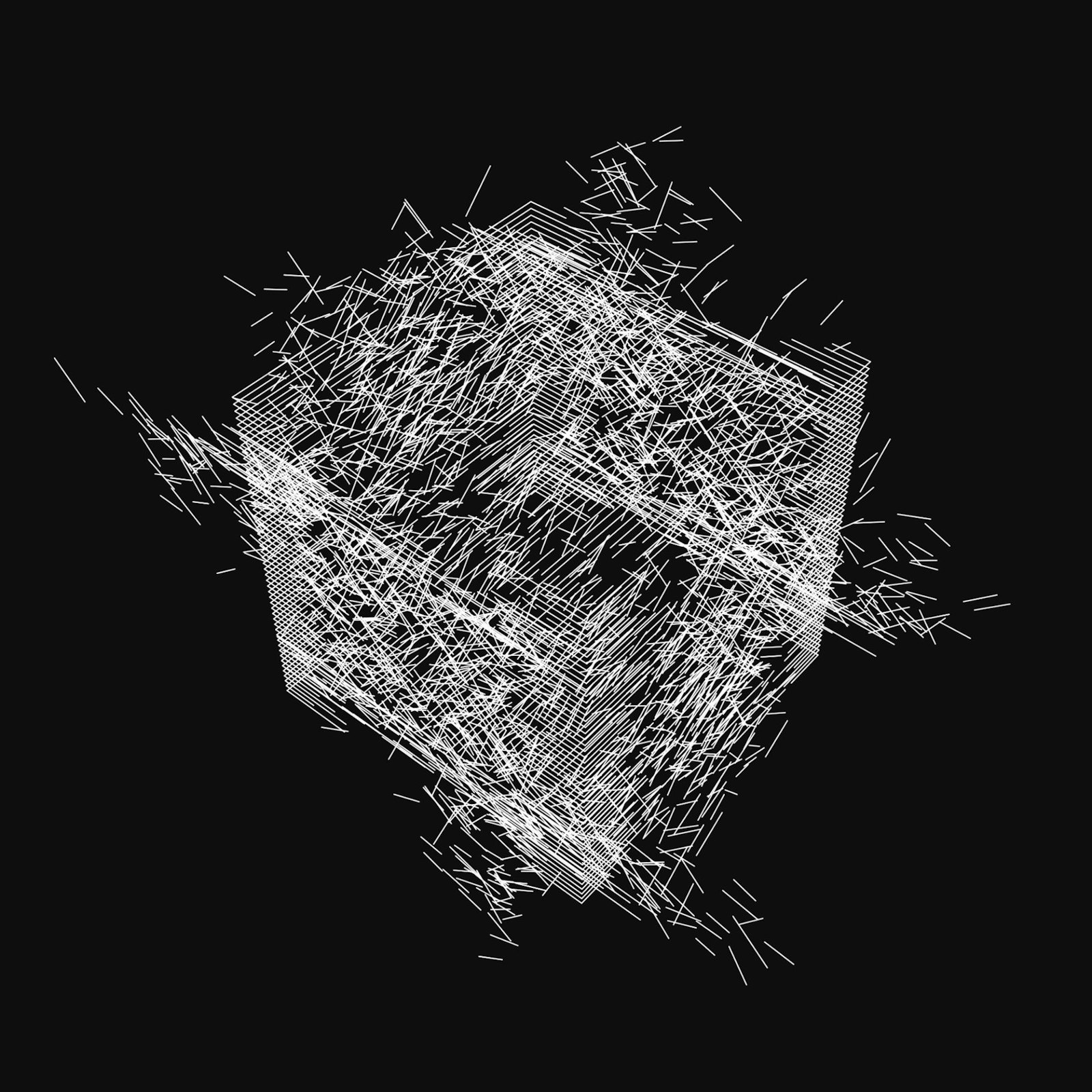
In the 1980s, Hans Dehlinger created a series of cubes as pen plotter drawings. Almost 40 years later, the now-84-year-old artist returned to this topic, and 10 new cubes, titled LINE CUBES, are emerging from code as "aesthetic events".
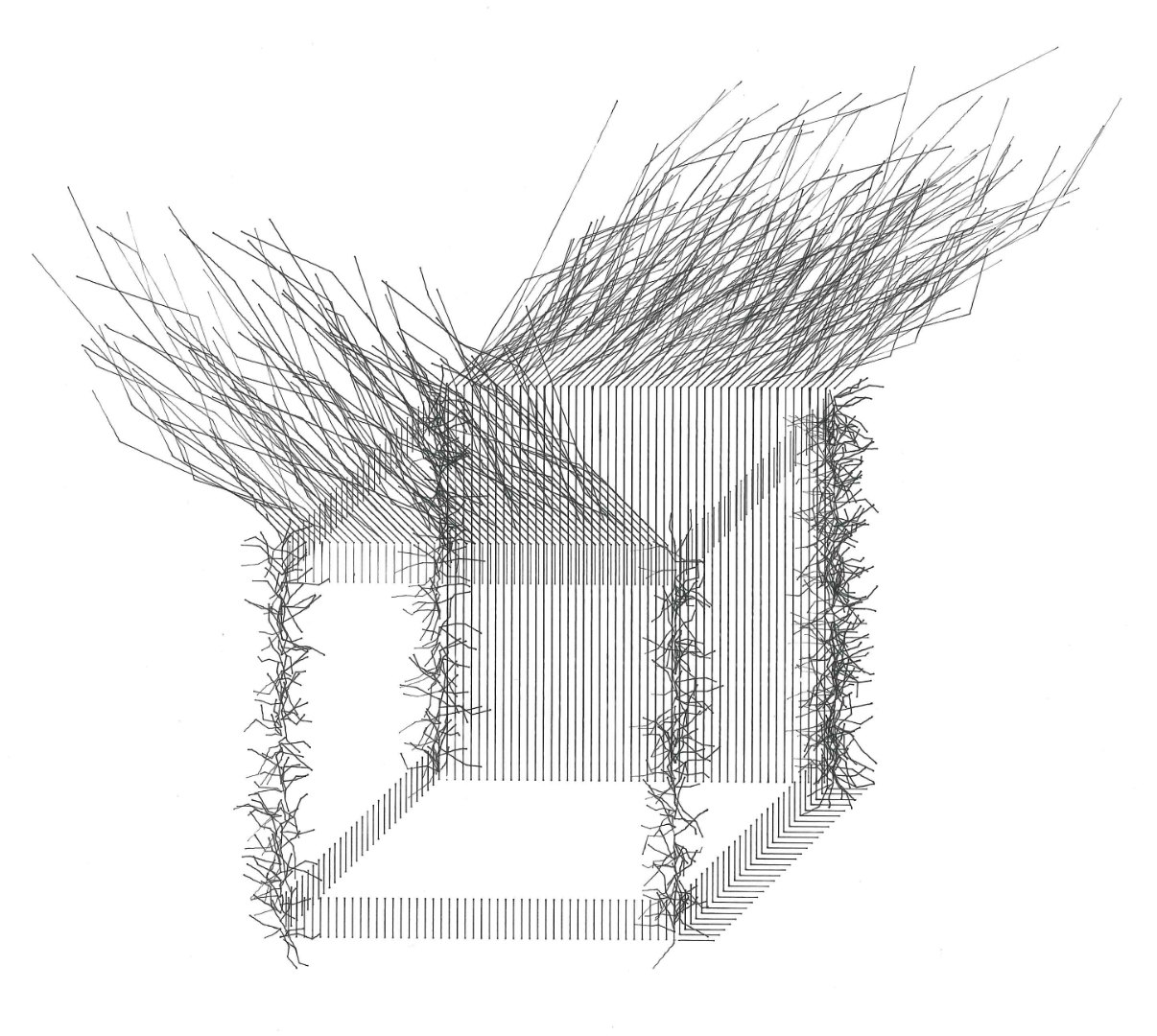
A fascination with cubes is visible in Hans Dehlinger‘s work from the very beginning of his artistic expression. Among his early drawings is a series of digitally manipulated cubes, originally produced in 1986/87 on a small pen plotter. Larger drawings followed as he gained access to a larger plotter in subsequent years. One of the works from this series, a silkscreen print of CUBE 4, was Hans Dehlinger‘s first contribution to SIGGRAPH in 1989. Today, it is in the collection of the V&A Museum, London.

“The cube has always exuded a special fascination for me. As an architect, I see it as an extraordinary three-dimensional object and a kind of primordial space. It is one of the five Platonic solids and mathematically very simple, with twelve equal edges, six equal surfaces, and all its angles are rectangular. It is visually striking, whether shown with surfaces or just edges.”
Hans Dehlinger learned how to code as a student in his twenties. Over the years, he had to learn new programming languages all the time, like anyone working with programming. Back then, he didn‘t have his own computer. Through the computer centre at the University of Kassel, Dehlinger had access to a Tektronix machine with a small A3 plotter. The first cubes series was made on that equipment, with Basic as a programming language.
Equipment was hard to come by and expensive. And there was very little recognition of computers as a valid tool for creating art. While the first attempts with cubes turned into a series, Dehlinger and two colleagues were trying to draw attention to computers in art and to alert other colleagues and students of their art school to the importance of this topic. This was in 1987. They organized a series of small exhibitions, talks, etc., and used the cubes for a poster for one of the events: a series of talks titled DESIGN KUNST COMPUTER (DESIGN ART COMPUTERS) that took place on June 26, 1987. There are 13 cubes on that poster.
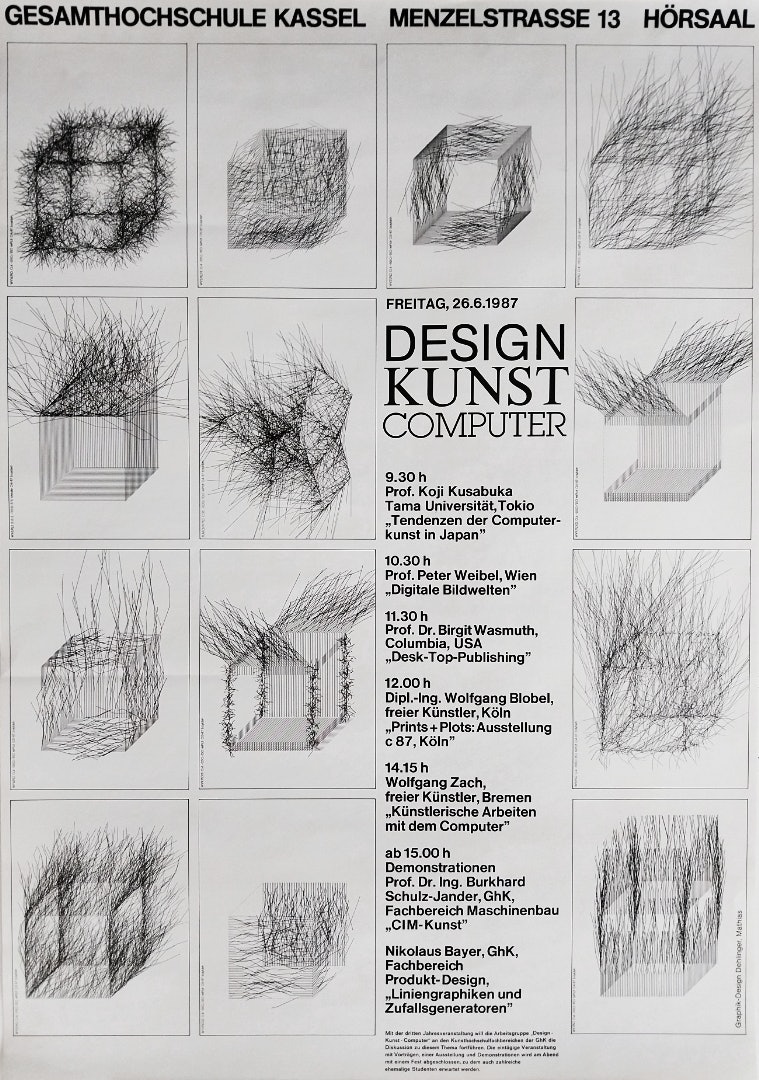
In the meantime, completely new programming tools and technology have become available that Dehlinger wanted to explore. Almost 40 years after the first cubes series, his fascination with cubes is still undiminished, so he chose them again as a topic.
In 2023, he was working on making the transition from Python 2, which he had worked with for several years, to Python 3, but it was quite a system jump, and Python 3 was also not so well suited for the things that interested him. So for some time, he didn‘t really have a setup that he could work with well.
Then he looked into p5.js and quickly realized some of it looked familiar because he had worked with Processing before. Of course, this was also a new version of Processing; 3D programming is possible now. The 2024 series of cubes is coded in Processing.

Through the new programming and technological possibilities that are available now, Dehlinger became aware of a whole new dimension of working with cubes. That includes 3D programming as well as releasing work that lives exclusively in the digital realm. Now, because generating output isn’t the hardest part anymore, selection becomes the main challenge. In other words, arriving at works that satisfy the artist’s own aesthetic ambitions isn‘t primarily a coding problem anymore, but a problem of judgment and selection.
At its core, selecting touches on the question, "What is art?" In Germany, there is a quote attributed to an incident where a work of Joseph Beuys was unintentionally destroyed: "Ist das Kunst oder kann das weg?" ("Is this art or can this be done away with?")
Hans Dehlinger says: "That is basically the question I ask myself. Once I’m at a point where I can’t further narrow down a selection myself, I may enlist help, including from my future self. For example, I ask myself whether I’ll still be happy with this output 20 years from now. By the way, with the CUBES series from 1986/87, this has proven to be true; I am still very happy with it to this day."
“There are many artists who have been recognized only posthumously or never. I could very easily have been one of them, but I am alive and still able to work on the things that intrigue me—and connect with many interesting people over them.”

Hans Dehlinger has lived a life with many chapters. And this is just the beginning.
Early on, there was the chapter when Dehlinger studied under German philosopher and logician Max Bense and alongside Frieder Nake, today one of the most well-known pioneers of computer art. Then, Dehlinger entered the Berkeley chapter, where he studied and later worked as an environmental planner and architect, before entering a chapter experimenting with plotter drawings and generative art. With a broad approach to art and an ever-curious mind, Dehlinger combined the previous chapters and knowledge and has become a pioneer of generative art.
With a focus on algorithmically generated line drawings, Dehlinger bases his generative artworks on computer code executed on pen plotters, forming delicate structures, dense textures, or even evoking an unsharp impression from sharp lines.
Hans Dehlinger (*1939, Germany) began working with programming languages and computers in the early 1960s during his studies in architecture at the University of Stuttgart (Dipl.Ing.). He continued his education at the University of California, Berkeley (M.Arch., Ph.D.), where he also worked as an environmental planner and architect. In 1980, he became Professor of Industrial Design at the University of Kassel, Germany, where he taught until his retirement in 2004.
In the early 1980s, he began to explore computers artistically, with a focus on algorithmically generated line drawings. The majority of his generative artwork is based on procedures and computer code executed on pen plotters. It thus has aspects of both electronic and physical art. The lines can form delicate structures, dense textures, or even evoke an "unsharp" impression from sharp lines.
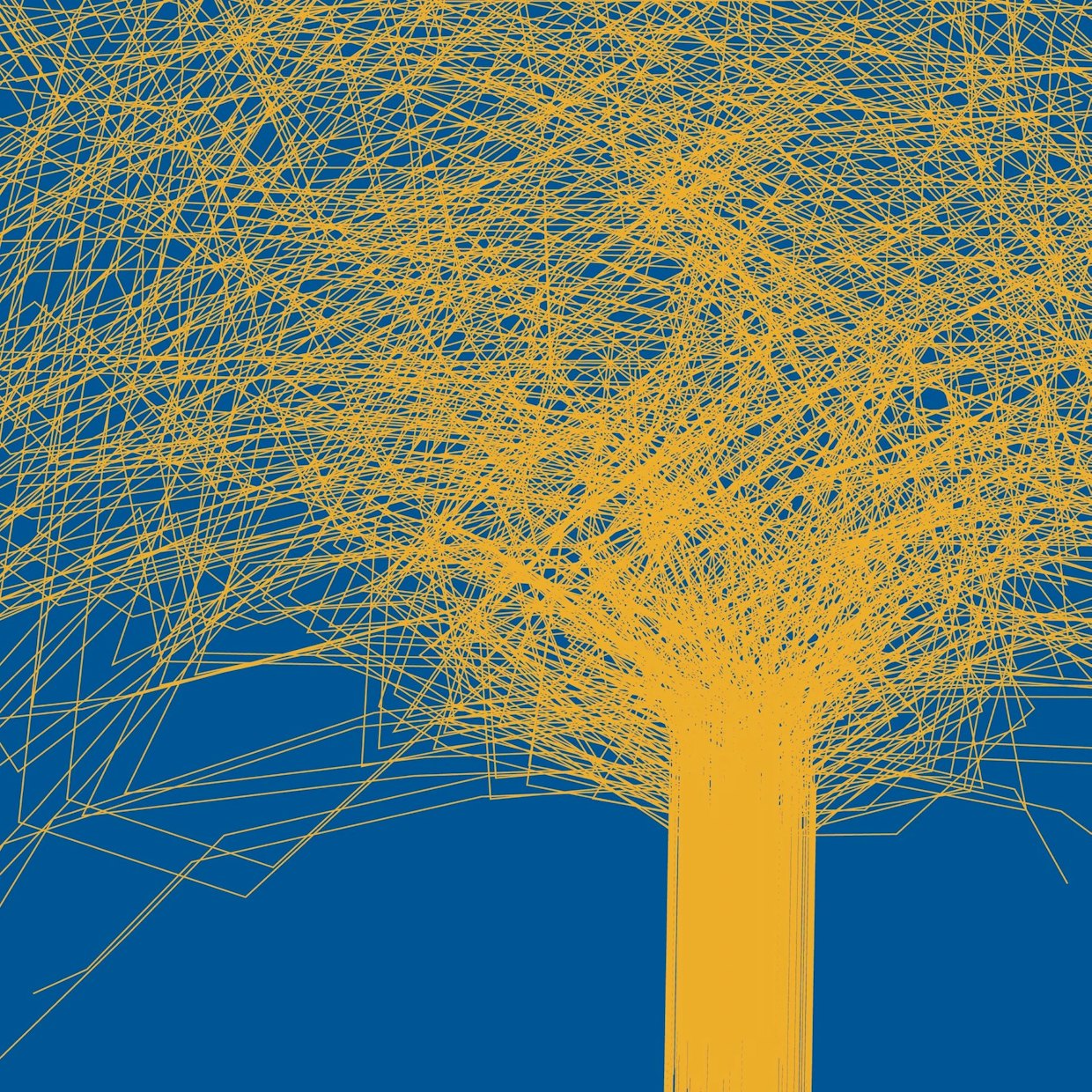
“The line is extremely intriguing to me. Actually, rock paintings are where art begins. The line is straightforward. There is a beginning and an end point. What occurs in the meantime is entirely up to chance. I assert that there is a line universe. It's a distinct, limitless universe.”
Dehlinger's generative processes are located on a spectrum between "one-pass processes," in which drawings are generated by programs without any intermediate visual feedback by the artist, and "composite processes," in which drawings are generated in a sequence of steps.
His work has received worldwide recognition and was shown first in Europe, later in Canada, Russia, Australia, the USA, Armenia, and China. The works of Hans Dehlinger are in private collections such as Spalter Digital, the Victoria and Albert Museum in London, and the Block Museum of Art in Evanston, Illinois. He is also a member of the informal group of Algorists.
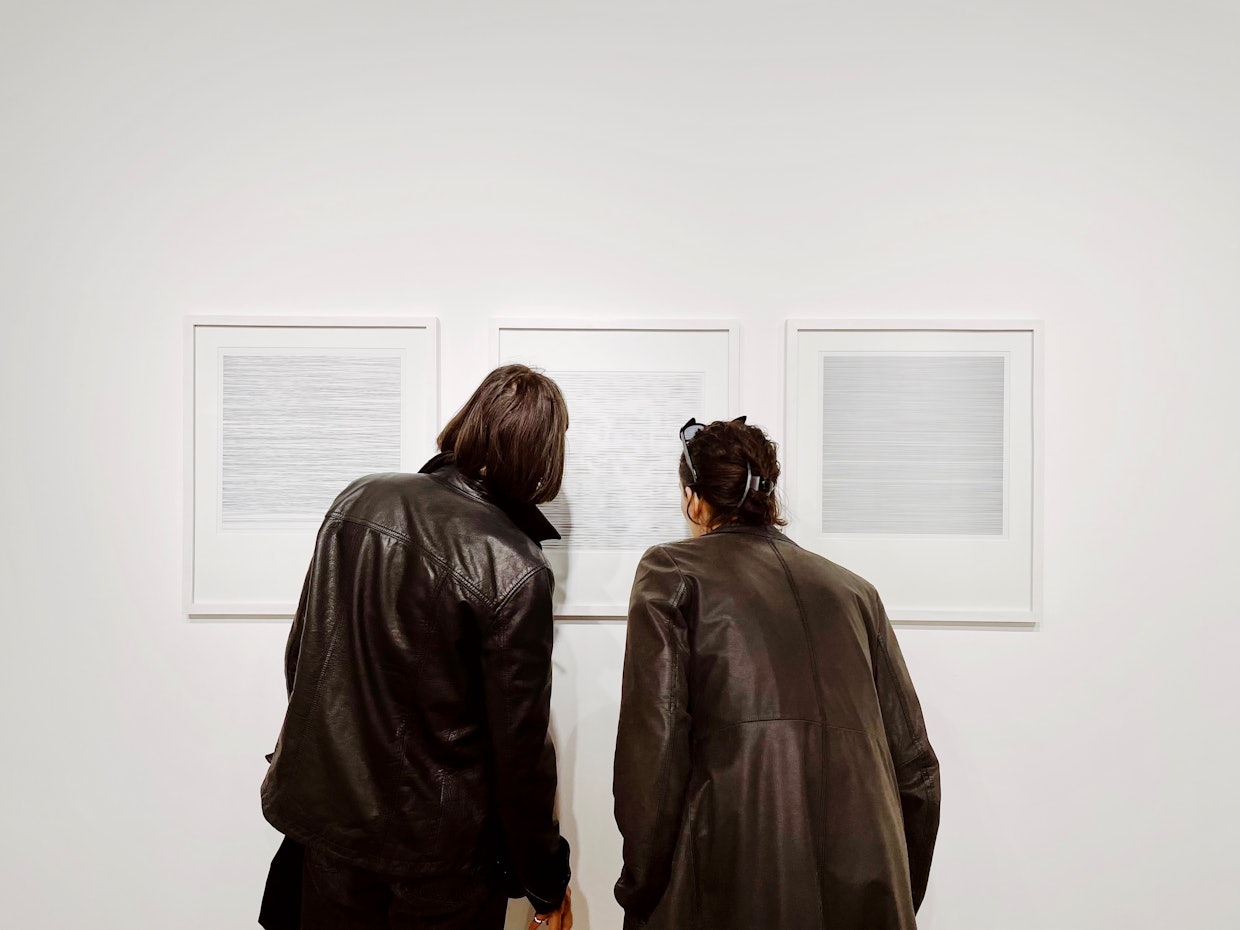
The series LINE CUBES is released on the occasion of Hans Dehlinger's duo show CODED CUBES, 1975-2024, with Betha Sarasin at EXPANDED.ART in Berlin.
15 February – 9 March 2024 | EXPANDED.ART | Friedrichstraße 67, Berlin.
We present yesterday‘s pioneers and today‘s avant-garde. | Friedrichstraße 67, Berlin